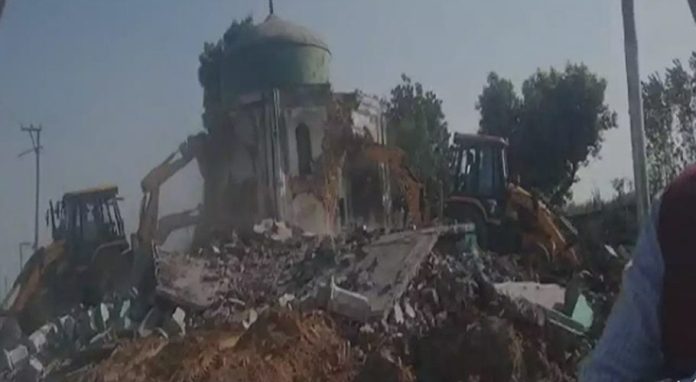The situation in Himachal Pradesh has become increasingly tense as protests demand the demolition of allegedly illegal mosques. A Muslim organization asserts that there are no illegal mosques in the state, attributing the issues to delays in the approval of construction maps in government records. Hindu groups involved in the “Hindu Dharam Jagaran Yatra” clashed with police in Kullu during their demonstrations on Monday.
Protests and Demands for Demolition
Protesters from the yatra marched from Hanuman Temple to Akhara Mosque, calling for the mosque’s demolition. The rally included many participants, including women, who carried saffron flags and placards. Local musicians and women in traditional attire led the procession, highlighting the communal aspects of the demonstration.
Origins of the Controversy
The demand for demolishing mosques escalated following a scuffle on August 30 between a Muslim barber and a Hindu businessman in Malyana, a suburb of Shimla. This incident sparked communal tensions, leading Hindu groups to call for the removal of mosques they deem unauthorized. Residents have also expressed concerns about identifying outsiders in the state.
Muslim Community’s Response
Naheem Ahmed, president of the Muslim Welfare Committee in Mandi, clarified that no mosque in Himachal Pradesh is illegal. He acknowledged that delays in map approvals have caused confusion but assured that the community would willingly remove any structures found to be unauthorized. A meeting of Muslim leaders in Balh concluded with a decision to form a state-level committee to discuss the situation with the chief minister.
Government Position
Kullu district authorities have stated that the mosque in Akhara Bazaar is not illegal. They noted a discrepancy between the mosque’s area in government records and its actual size, with a case for regularization currently pending with the town and country planning department. The mosque occupies a total area of 980 square meters, with a deviation of approximately 150 square meters noted.
Historical Significance
The Jama Masjid in Kullu is recognized as a pre-Independence structure and is included in a state government gazette notification dated August 15, 1970. This historical context adds significance to the current debates surrounding its legality.
Recent Incidents of Violence
Tensions intensified on September 11 when ten individuals were injured during a protest in Sanjauli, where demonstrators called for the demolition of a mosque. Similar protests erupted in Mandi shortly thereafter, necessitating the use of water cannons by police to disperse the crowds. Additionally, residents of Kasumpti in Shimla submitted requests for the demolition of a mosque in their area, echoing sentiments expressed by residents of Sunni and other regions.
Conclusion
The mosque controversy in Himachal Pradesh reflects a complex intersection of community relations and administrative challenges. As Hindu groups continue to demand the demolition of structures they perceive as illegal, the Muslim community maintains that all mosques are legitimate, with any issues stemming from bureaucratic delays. This ongoing situation underscores the need for dialogue and mediation to foster communal harmony and address legal concerns.




